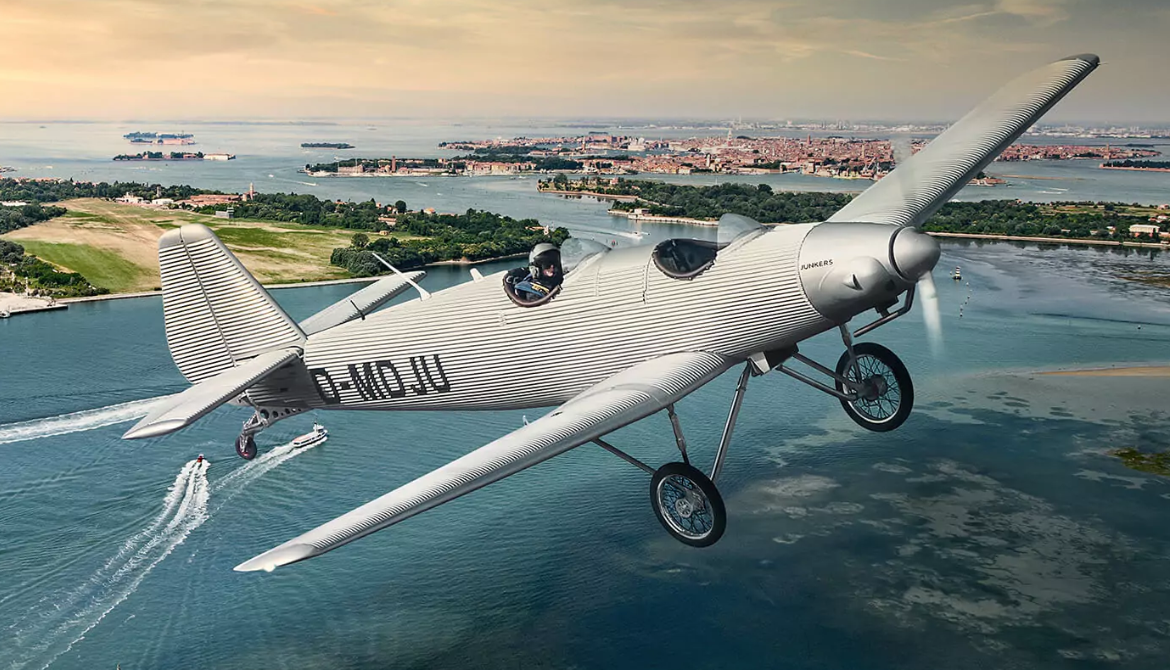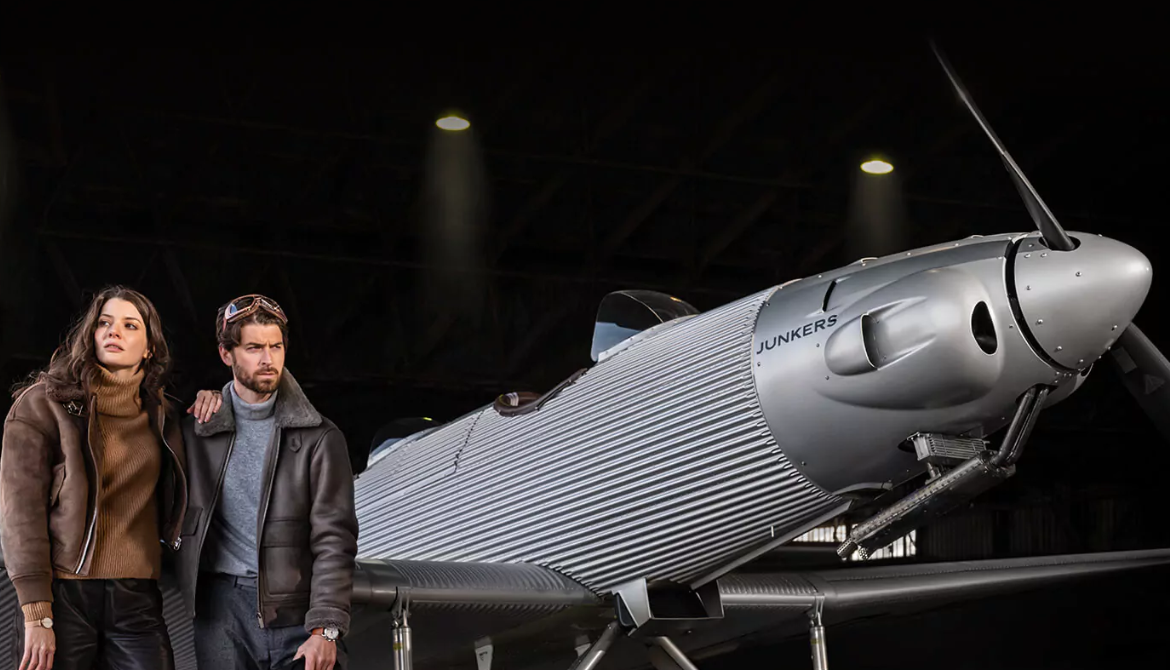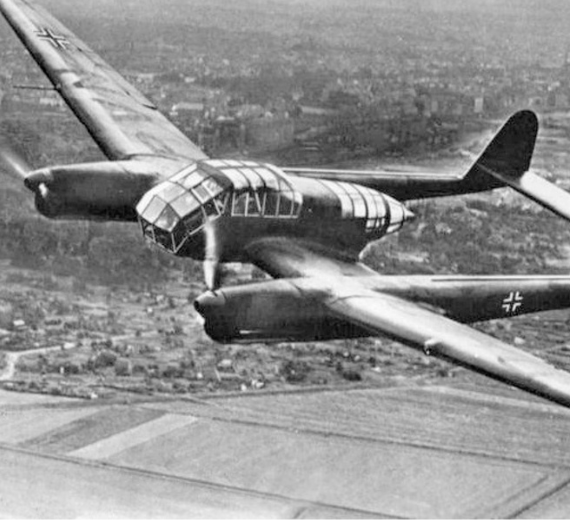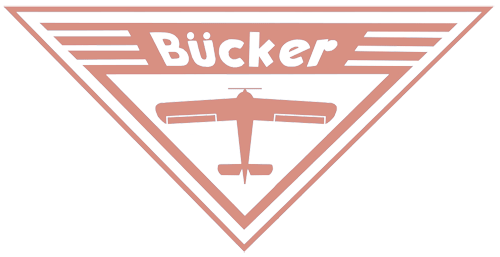FW Flugzeugbau AG Focke Wulf FW-189 Uhu
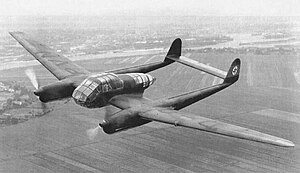 |
|
| Role | Tactical reconnaissance and army cooperation aircraft, light bomber |
|---|---|
| Manufacturer | Focke-Wulf |
| Designer | Kurt Tank |
| First flight | July 1938 |
| Introduction | August 1941 |
| Retired | 1945 |
| Primary users |
Luftwaffe
|
| Produced | 1940–1944 |
| Number built | 864 |
.
History Focke-Wulf Flugzeugbau AG
Focke Wulf FW-189 Uhu "Eagle Owl"
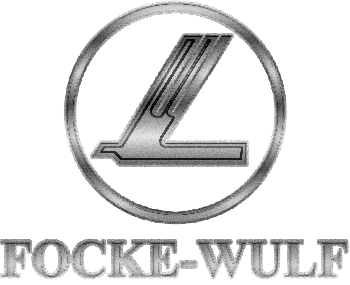
The Focke-Wulf Fw 189 Uhu ("Eagle Owl") is a German twin-engine, twin-boom, three-seat tactical reconnaissance and army cooperation aircraft. It first flew in 1938 (Fw 189 V1), entered service in 1940 and was produced until mid-1944.
In addition, Focke-Wulf used this airframe in response to a tender request by the RLM for a dedicated ground-attack airplane, and later submitted an armored version for trials. However, the Henschel Hs 129 was selected instead.
In 1937, the German Ministry of Aviation issued a specification for a short-range, three-seat reconnaissance aircraft with a good all-round view to support the German army in the field, replacing the Henschel Hs 126, which had just entered service. A power of about 850–900 hp (630–670 kW) was specified. The specification was issued to Arado and Focke-Wulf. Arado's design, the Ar 198, which was initially the preferred option, was a relatively conventional single-engined high-wing monoplane with a glazed gondola under the fuselage. Focke-Wulf's chief designer Kurt Tank's design, the Fw 189, was a twin-boom design, powered by two Argus As 410 engines instead of the expected single engine. As a "twin-boom" design like the earlier Dutch Fokker G.I, the Fw 189 used a central crew gondola for its crew accommodation, which for the Fw 189 would be designed with a heavily glazed and framed "stepless" cockpit forward section, which used no separate windscreen panels for the pilot (as with many German medium bombers from 1938 onwards)..
Variants
The main production model was the Fw 189A reconnaissance plane, built mostly in two variants, the A-1 and A-2. Unless otherwise stated all aircraft were powered by two Argus As 410 engines of 465 PS (459 hp, 342 kW).
- Fw 189 A-0: Ten preproduction aircraft for operational tests and trials.
- Fw 189 A-1: Initial production version, armed with two flexible 7.92 mm (.312 in) MG 15 machine guns in the dorsal and rear positions, one 7.92 mm (0.312 in) MG 17 machine gun in each wing root, plus four 50 kg (110 lb) bombs. It could carry an Rb 20/30 or an Rb 50/30 aerial camera.
- Fw 189 A-1 trop: Tropicalised version of the Fw 189 A-1, fitted with air intake filters and survival equipment. Conversion from A-1s.

- Fw 189 A-1/U2: VIP transport version of the Fw 189 A-1.
- Fw 189 A-1/U3: VIP transport version of the Fw 189 A-1.
- Fw 189 A-2: The flexible MG 15s were replaced by twin-barrel 7.92 mm (0.312 in) MG 81Z.
- Fw 189 A-3: Tropicalised production version of the Fw 189 A-2, fitted with air intake filters and survival equipment.
- Fw 189 A-4: Light ground-attack version, armed with two 20 mm MG 151/20 cannons in each wing root, fitted with armour protection for the underside of the fuselage, engines and fuel tanks. No production known.
The Fw 189B was a five-seat training aircraft; only 13 were built.
0
KmCeiling
0
KmCombat RANGE
0
Km/hAircraft Speed
0
Max Crew
Photo Gallery
Focke-Wulf Flugzeugbau AG
Focke Wulf FW-189 Uhu "Eagle Owl"


Focke-Wulf Flugzeugbau AG
Focke Wulf FW-189 Uhu
General Info
-
-
- Crew: 3
- Length: 11.9 m (39 ft 1 in)
- Wingspan: 18.4 m (60 ft 4 in)
- Height: 3.1 m (10 ft 2 in)
- Wing area: 38 m2 (410 sq ft)
-
Powerplant
-
- Empty weight: 2,690 kg
- Gross weight: 3,950 kg (8,708 lb)
- Powerplant: 2 × Argus As 410A-1 V-12 inverted air-cooled piston engines 465 PS (459 hp; 342 kW)
- Propellers: 2-bladed Argus variable-pitch propellers
-
Performance
- Maximum speed: 344 km/h (214 mph, 186 kn) at 2,500 m (8,200 ft)
- Cruise speed: 317 km/h,
- Landing speed: 120 km/h;
- Range: 940 km (580 mi, 510 nmi)
- Service ceiling: 7,000 m
Armament
-
- Guns:
-
- 2 × 7.92 mm (.312 in) MG 17 machine guns mounted in the wing roots, firing forward
- 1 × 7.92 mm (.312 in) MG 15 machine gun in dorsal flexible mount position firing rear
- 1 × 7.92 mm (.312 in) MG 15 in rear cone firing to rear (optional)
- Bombs:
-
- 4 × 50 kg (110 lb) bombs
.
Links to Youtube & Others
The Fw 189 had as part of its defensive armament, an innovative rear-gun emplacement designed by the Ikaria-Werke: a rotating conical rear "turret" of sorts, manually rotated with a metal-framed, glazed conical fairing streamlining its shape, with the open section providing the firing aperture for either a single or twin-mount machine gun at the unit's circular-section forward mount.
Focke Wulf FW-189 Uhu
Night Reconnaissance Group 15, attached to the 4th Panzerarmee in southern Poland during late 1944, carried out nocturnal reconnaissance and light bombing sorties with a handful of 189A-1s.
Youtube Link
Chronic fuel shortages and enemy air superiority over the 189 defence area (chiefly Berlin) meant that few aircraft were shot down by these craft.


